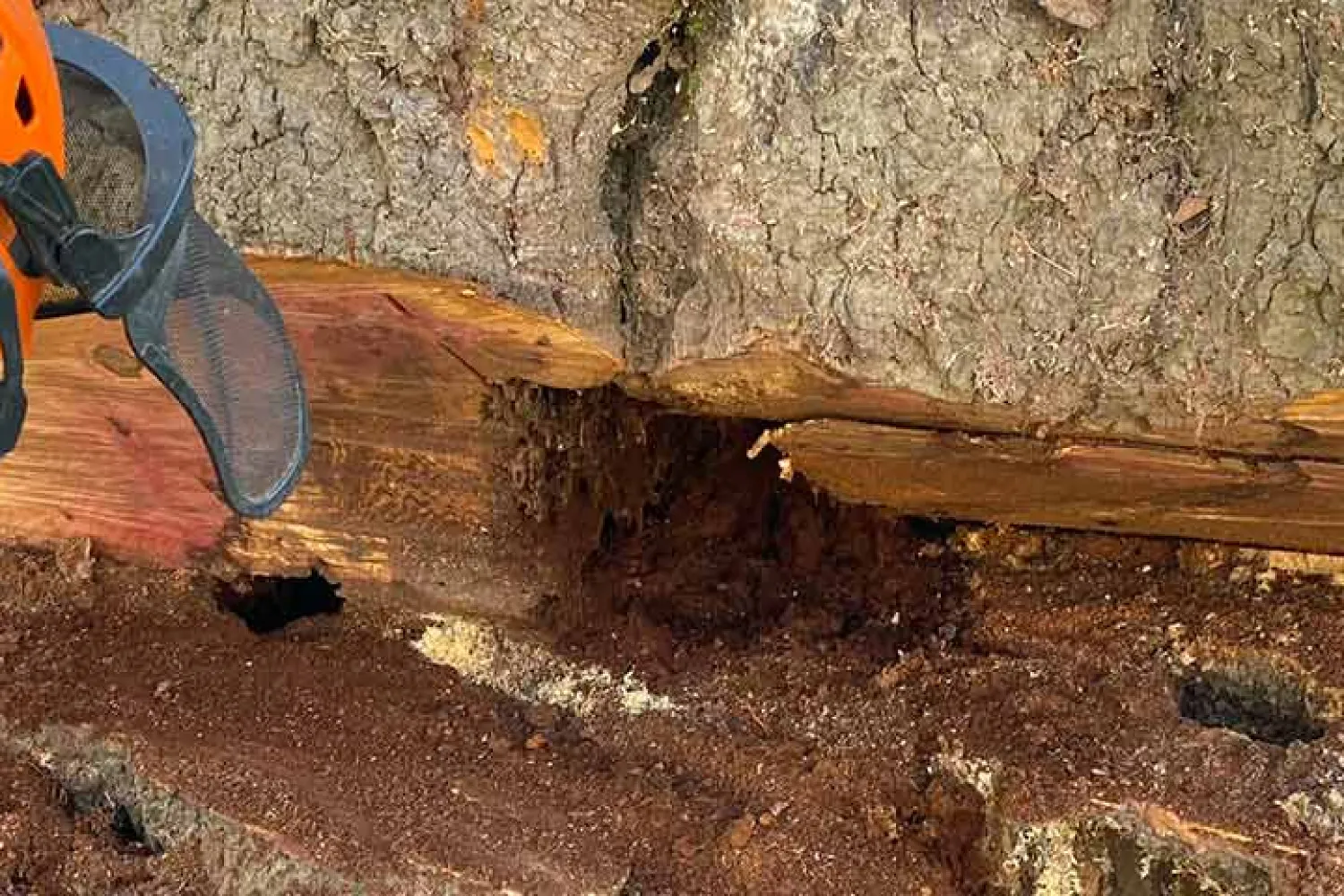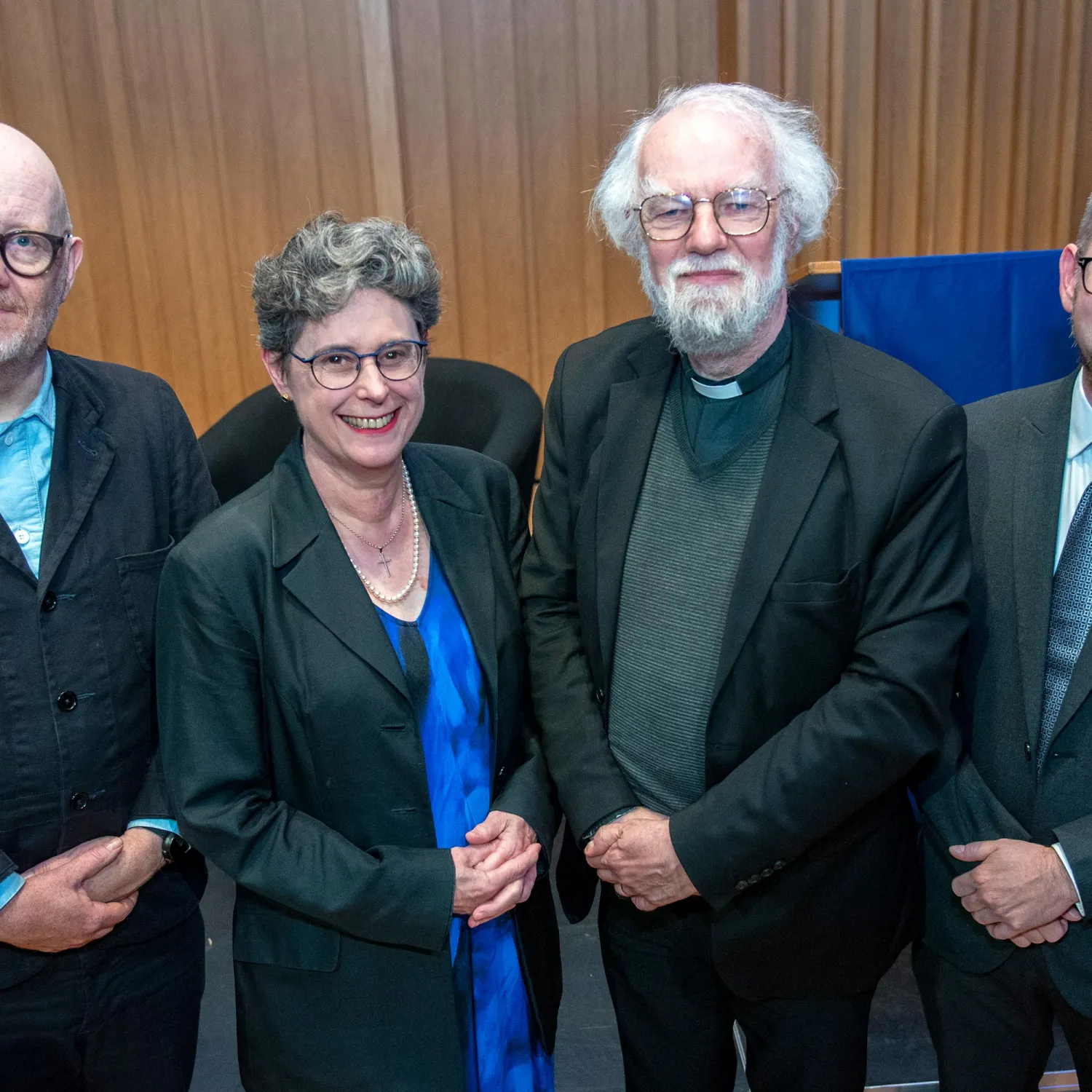Breadcrumb
Tree work around Christ Church
Head gardener John James writes about the recent tree work around Christ Church Meadow.
Residents, visitors, staff and students will have noticed a significant amount of tree work around Christ Church Meadow recently.
We have a duty of care to ensure that all our trees are safe and don’t represent a threat to the safety of all those who pass through the Meadow and gardens on a daily basis, and that all trees are in a healthy condition to ensure their longevity.
Every other year a tree surveyor looks at every tree (and there are over 1,200 in total) and makes recommendations as to any work required to make sure they are safe and in good condition.
 These recommendations are prioritised in order of importance, and then, as the whole site is a Grade I listed landscape and in a conservation area, we have to notify the city tree planning officers of our intentions. They then have six weeks to inform of us of any objections to the proposed work, but luckily this rarely happens as they know that we only do work that is really necessary and we work hard to ensure they understand our long-term plans for tree care and replacement.
These recommendations are prioritised in order of importance, and then, as the whole site is a Grade I listed landscape and in a conservation area, we have to notify the city tree planning officers of our intentions. They then have six weeks to inform of us of any objections to the proposed work, but luckily this rarely happens as they know that we only do work that is really necessary and we work hard to ensure they understand our long-term plans for tree care and replacement.
This year has seen much visible work carried out, much of which is pollarding (the technique of regularly pruning trees or shrubs back to a trunk to form a head of branches) of willows around the Meadow.
Willows tend to get very brittle with age and can start to fall apart, hence the process of pollarding to enable them to be retained for much longer than would otherwise be the case. Once a tree has been pollarded, the process has to be repeated every four to five years to prevent the new growth breaking away and damaging the trees.
 There are several big old willows such as the one in the Memorial Garden that are pollarded at height to retain a large tree with good height, and others such as those across the middle of the Meadow which are pollarded at a relatively low point in order to keep them small. It is important that these small willows are regularly pollarded in order to retain the popular views across the Meadow as it is amazing how quickly they grow up and block the view.
There are several big old willows such as the one in the Memorial Garden that are pollarded at height to retain a large tree with good height, and others such as those across the middle of the Meadow which are pollarded at a relatively low point in order to keep them small. It is important that these small willows are regularly pollarded in order to retain the popular views across the Meadow as it is amazing how quickly they grow up and block the view.
On Ansell’s Field to the west of New Walk, several willows have been pollarded for the first time. This includes two that had developed dangerous leans and are prone to dropping large limbs – they are called Crack Willows (Salix fragilis) for a very good reason, these have been left as high stumps so that they regrow as coppice stools, and a group of five that have been pollarded at around five metres in order to retain some height and hence screening for the buildings to the west.
Unfortunately, we have had to fell a small number of ash trees as they have been infected with Ash Dieback disease which has become prevalent over the whole country. Luckily, we don’t have too many ash trees and those that have been affected so far are mainly quite small, but we will continue to monitor those that remain and only remove them if affected and causing a hazard to those visiting the Meadow.
 When the tree surveyor has concerns about a tree’s health and the possibility of internal decay, further investigations are made to find out how badly affected the tree is.
When the tree surveyor has concerns about a tree’s health and the possibility of internal decay, further investigations are made to find out how badly affected the tree is.
A case in point is the large circa 200-year-old London Plane tree near the Visitor Centre. This had a small area of visible decay on the northern side which we have been monitoring over the last 10 years.
In cases like these, a sonic tomograph is used to map out the internal decay to give an equivalent of an x-ray of the tree. The process involves sending sound waves through the tree to a number of sensors, these are connected to a computer that measures how fast the sound travels through the tree trunk and interprets this to give a pictorial representation of the decay.
Sadly, the tomograph revealed that the tree had become heavily decayed internally so it was no longer safe to retain, especially as this area has become a popular spot for groups to meet and picnic before visiting the college.
 All this work may sound quite negative, but it is essential both for the health of the trees and for the safety of the many people who pass through the Meadow and gardens annually.
All this work may sound quite negative, but it is essential both for the health of the trees and for the safety of the many people who pass through the Meadow and gardens annually.
On the plus side and to compensate for the losses, we have also planted in excess of 45 new trees ranging from native Black Poplars (Populus nigra) on Boathouse Island, through some unusual oaks, hawthorns and hickories on the Cherwell Path, Dean’s Ham and Ansell’s Field, to a replacement London Plane by the Visitor Centre.
John James, Head Gardener
Other Christ Church news




























